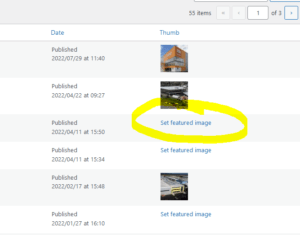
A video that’s well-optimised for search engines will show up whenever a related question is typed into Google’s (or YouTube’s) search box
April 23, 2019 4 min read
Opinions expressed by Entrepreneur contributors are their own.
You understand the power of content marketing in attracting and retaining customers. You already have your YouTube channel up and running, and you have some truly great content on there, but your videos aren’t getting enough engagement. Sound relatable? This is what nearly 3 in 5 of companies who engage in content marketing face, and it makes them question whether their investment in the video was truly worth it.
Why does this happen? That’s because YouTube’s algorithm differs from Google’s.
To put it simply, optimising your website alone for Google’s search engines won’t do much for your videos on YouTube. As with websites, Search Engine Optimisation (SEO) tactics are crucial for video content. But, when it comes to videos, optimising for search is often not the primary consideration.
Just like website SEO, video SEO is the process of using certain tactics to ensure your videos are discovered online. While building a business, video can be used for a variety of functions– from product updates to recruitment to stakeholder communication–and each video should speak to a specific audience segment. But, in an environment saturated with video content from competing brands, this means more than simply shooting and uploading more videos.
A video that’s well-optimised for search engines will show up whenever a related question is typed into Google’s (or YouTube’s) search box. For example, when searching: “What’s the best credit card?” on Google, an optimised video would rank highly in the top few positions, getting the most views – and is consequently a smart place for credit card companies to create video content against.
Fortunately, basic SEO is not as daunting as it sounds. To get your videos ranked in the top few positions on both Google and YouTube, follow these six straightforward steps to ensure your videos are performing their very best and getting the views they deserve.
1. Use the Right Target Keywords
Finding out what people are searching for and using those relevant keywords in your videos improves the chances of them showing at the top of search results. The more precise (read: niche) your keywords are, the less competition you’ll have to rank for them.
2. Use your Keywords Wisely
Once you’ve found the right long-tail keywords for your videos, use them wisely but liberally, in your video file names, titles, meta descriptions and transcripts, timestamps and overall summary, as this is the information search algorithms used to accurately determine the content relevance of your videos.
3. Create a Custom Thumbnail
An eye-catching, attractive thumbnail that shows up in search results could be the deciding factor for someone to click on your video.
4. Publish a Blog Post that Targets the Same Keyword
This is beneficial because both the post and the video can rank on Google. Embed the video in the blog post and link it to the blog in the video description. The more traffic you get to the blog post, the more views you can get for your video, and vice versa.
5. Encourage Audience Interaction
Include call-to-actions in your videos. Views, likes, comments and embeds are considered favourable audience interactions, making your videos more likely to show up in search results. Also, viewer feedback may help guide future content!
6. Promote your Video
Embed them on your website, share them on social media and use them in your newsletters or marketing emails – and basically, just spread the word. And, don’t be afraid to put budget behind key videos (with a clear objective, message, CTA and KPI, to ensure your success).















